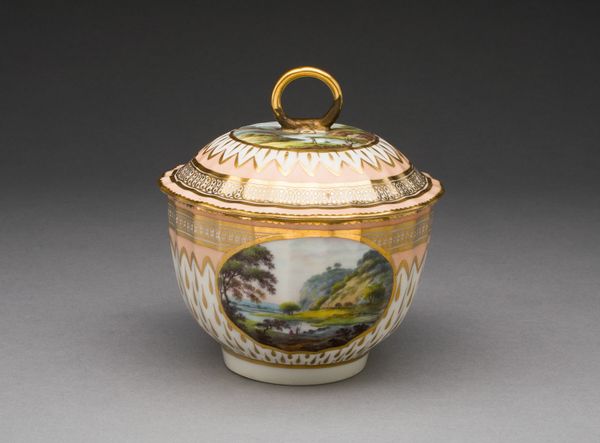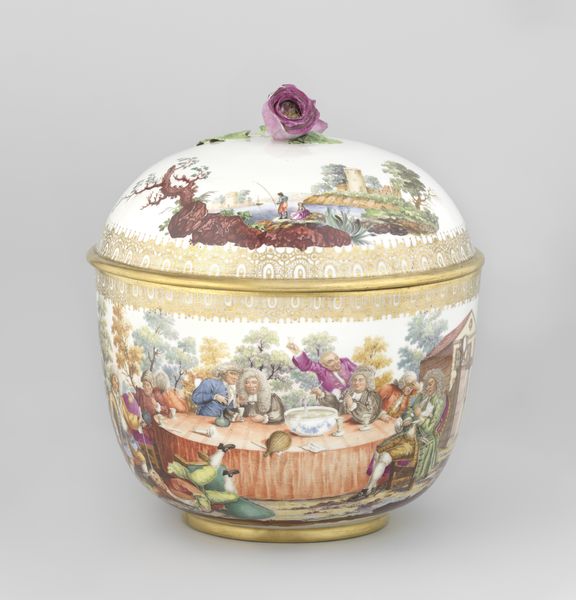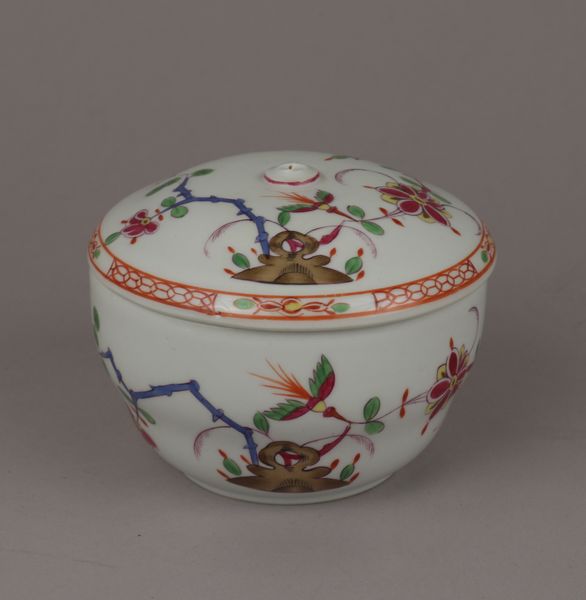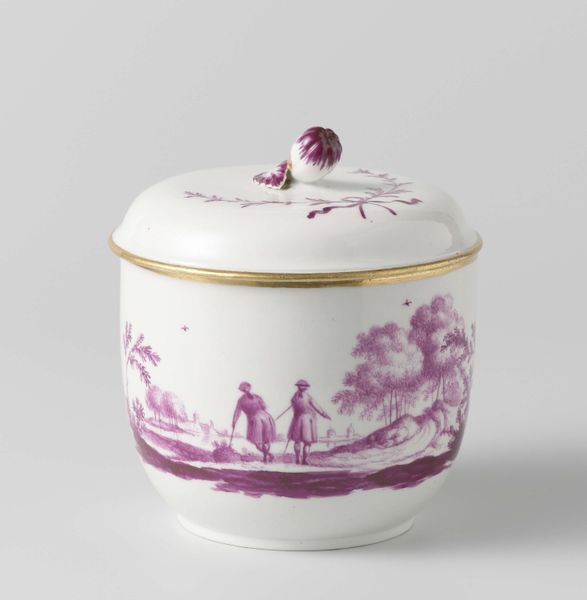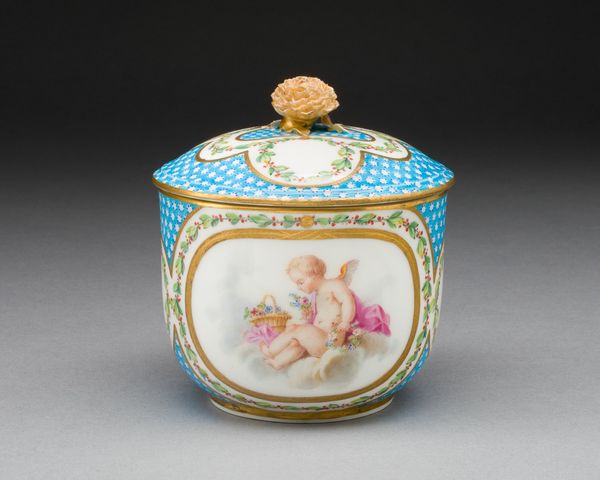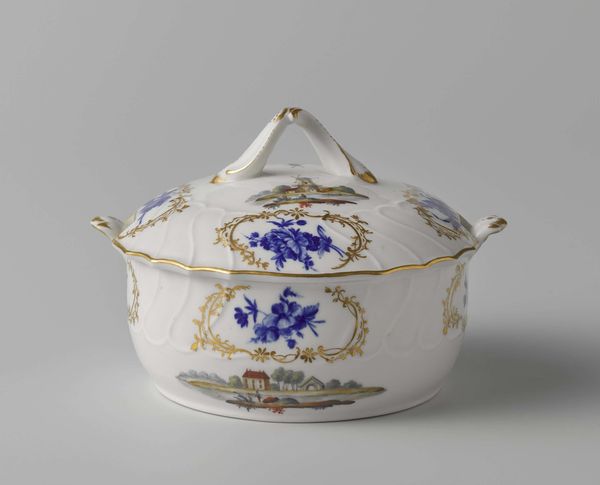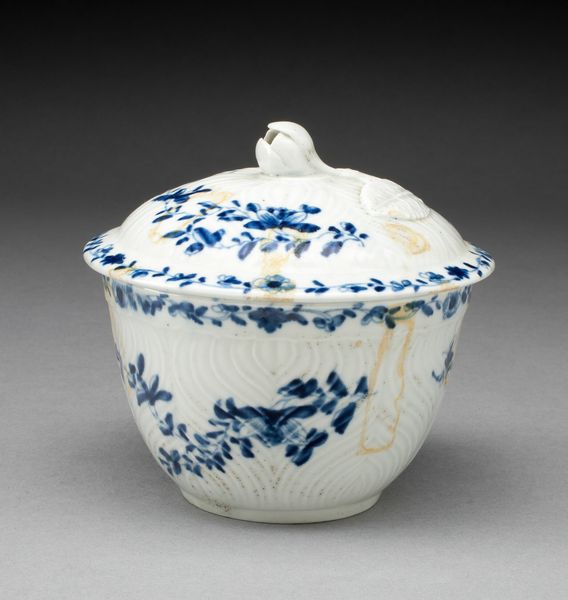
ceramic, porcelain, sculpture
#
ceramic
#
porcelain
#
sculpture
#
ceramic
#
genre-painting
#
decorative-art
#
rococo
Dimensions: Height (with cover): 4 9/16 in. (11.6 cm)
Copyright: Public Domain
This sugar bowl with cover was made in Italy at the Doccia Porcelain Manufactory, a company founded in 1737. It's made from porcelain, a refined ceramic material that was highly prized in Europe at this time. The smooth, white surface of porcelain provided the perfect canvas for the painted scenes and gilded details, like the delicate flower that serves as the lid's handle. The making of porcelain was a complex, laborious process. The factory relied on a division of labor, with some workers focused on forming the clay, others on firing, and still others on surface decoration. This division allowed for a high volume of production but also distanced workers from the finished product. The scenes depicted on the bowl are not accidental; they reflect the desires and fantasies of the aristocratic class who purchased them. These images, combined with the expensive materials and laborious production process, elevated this sugar bowl beyond a simple functional object. It became a status symbol, a testament to wealth, and a celebration of refined taste. Understanding the material, making, and social context allows us to see it as a complex product of its time.
Comments
No comments
Be the first to comment and join the conversation on the ultimate creative platform.


